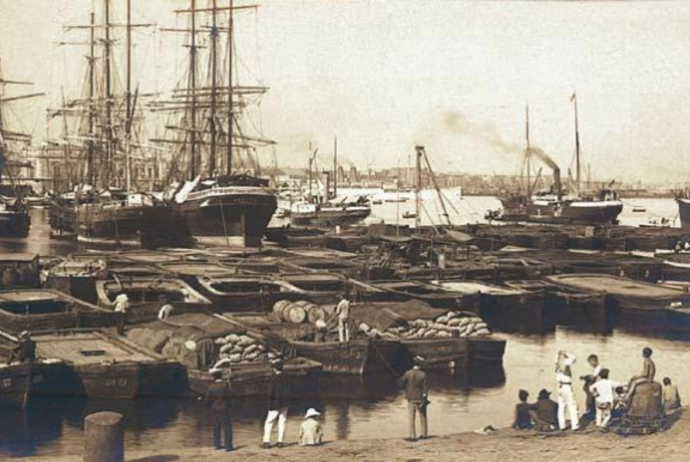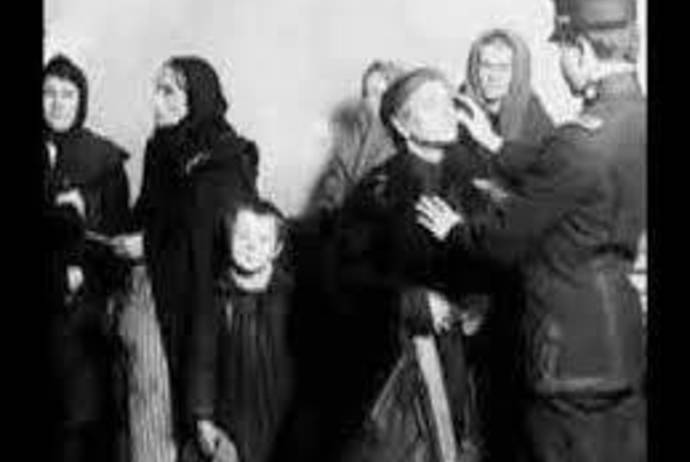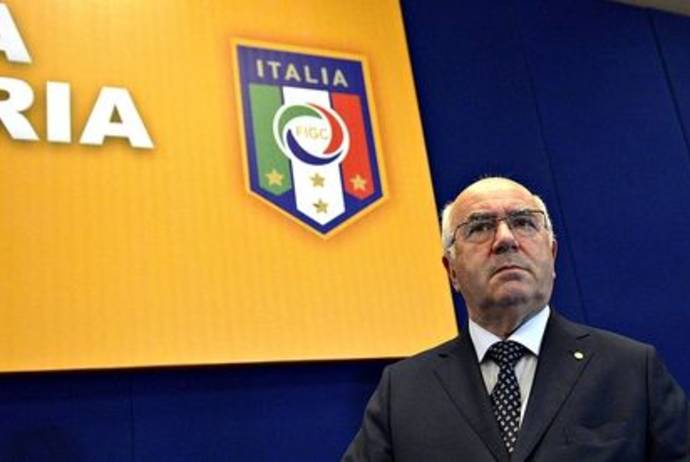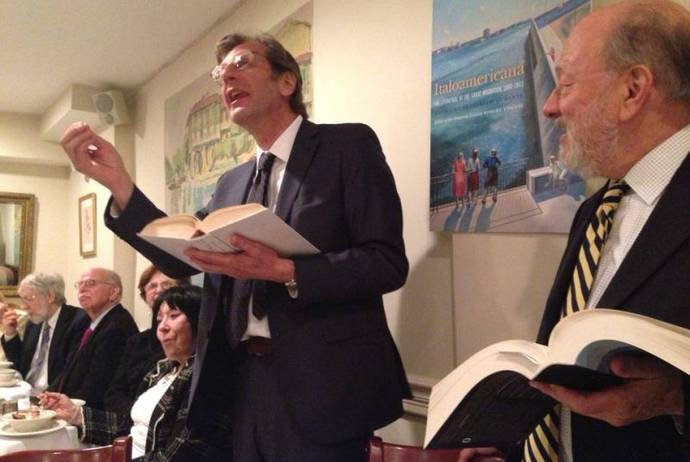Cari Amici,
I am sending along the Call for Papers for the next Italian American Studies Association’s annual conference (formerly, American Italian Historical Association), to be held in Long Beach, California, hosted by California State University Long Beach’s George Graziadio Center for Italian Studies under the leadership of Dr. Clorinda Donato.
As you peruse the Call and the many suggested themes, and as you ponder especially the four highlighted adjectives ("Recorded, Reported, Projected, and Pixilated”), let me ask that you think a bit outside the box and, perhaps, think of antonyms, so to speak, and consider how Italian Americans are seen, or NOT, by Italian cultural hegemonies.
As for my own experience, as someone who migrates regularly between both Italian and Italian diaspora studies, I offer up the following as food for thought as well as an invitation to think differently.
As we know, Italian-American studies does not enjoy the favorable positioning one might think it does (or should) within Italian studies (especially when conceived within the mid-set of italianistica) both inside and outside of Italy. A decade ago the American studies journal in Italy, Àcoma, dedicated a special issue to the theme, “L’America che leggiamo: saggi e aggiornamenti,” with no reference at all to any U.S. writer of Italian descent, not to mention the notion of any semblance of a thematics we might call Italian-American literature. This, notwithstanding the aesthetic positioning of John Fante in Italy, or the cultural/literary history of the United States with the likes of — Yes, it is a long list of many, not all, whom we should surely know. — Helen Bartolini, Mary Jo Bona, Grace Cavalieri, John Ciardi, Peter Covino, Don DeLillo, Rachel Guido deVries, Emanuel di Pasquale, Louise DeSalvo, W. S. DiPiero, Louisa Ermelino, Gil Fagiani, Maria Famà, Lawrence Ferlinghetti, Mario Fratti, Fred Gardaphe, Dana Gioia, Daniela Gioseffi, Maria Mazziotti Gillan, George Guida, Gerry La Femina, Annie Rachel Lanzillotto, Frank Lentricchia, Maria Lisella, Paul Mariani, Donna Masini, Stephen Massimilla, Fred Misurella, Joey Nicoletti, Jay Parini, Joseph Ricapito, Nicole Santalucia, Felix Stefanie, Maria Terrone, Lewis Turco, Joseph Tusiani, Anthony Valerio, Pasquale Verdicchio, Richard Vetere, Robert Viscusi, Arturo Vivante, Frances Winwar, and so on. Or, better still, there are those who have and continue to write poetry and/or fiction in Italian and live in the U.S.: Luigi Ballerini, Emanuel Carnevali, Peter Carravetta, Alessandro Carrera, Tiziana Rinaldi Castro, Giovanni Cecchetti, Ned Condini, Alfredo de Palchi, Rita Dinale, Franco Ferrucci, Luigi Fontanella, Arturo Giovannetti, Ernesto Livorni, Irene Marchegiani, Mario Moroni, Pier Maria Pasinetti, Emanuele Pettener, Mario Pietralunga, Giose Rimanelli, Annalisa Saccà, Victoria Surliuga, and Paolo Valesio are some of the names that come to mind in this regard.
Fortunately, let me add as I continue, contrary to the above-cited Americanist journal in Italy, the Italian studies journal, Studi italiani, housed at the Università degli Studi di Firenze and edited by Gino Tellini, launched last year the section “Oltreconfine,” which is dedicated to the Italian diasporic voice outside Italy, especially that voice articulated in Italian. Then, at the AISNA (Association Italiana di Studi Nord Americani) biannual conference at the Università degli Studi di Napoli L’Orientale last September 2015, the Association dedicated a plenary session to the volume, Transcending Borders, Bridging Gaps: Italian Americana, Diasporic Studies, and the University Curriculum, a collection of essays that originated from a four-day workshop at the Rockefeller Foundation Center in Bellagio, Italy. So, surely, Spes ultima sea! Things are looking up!
Given as much, then, the simple question is, “Why does Italian diaspora studies linger in the academy, both in the United States and in Italy?” “What is its position within ethnic studies across the U.S.?" Alternatively, one might ask, “Why, then, haven’t programs of Italian studies outside Italy picked up the mantle, given the vast number of Italians who left Italy during the great wave of migration?” One might assume, for instance, that those of Italian descent have, perhaps, engaged in an act of identity descension (pun intended) for which any reference to their Italian ancestry is null and void, and, consequently, their identity politics is solely articulated within a U.S. profile. In yet another sense, one might readily assume that there indeed exists a sort of hegemonic privilege among scholars of “Italian” (Read, peninsula. [Yes, the privilege of hegemony, I would submit, is restricted to those on the peninsula; the islanders are not always invited into the club.]) cultural history and practice (Read, literature and cinema especially.) for which any notion of an extra-Italy articulation of something that resembles “Italian” in some manner or form, simply does not exist. Ultimately, then, one might speak in terms of an historical omission of any sort of cultural manifestation of an Italian diaspora. That said, I am proposing the following session(s):
"The Coincidence of Italian Cultural Hegemonic Privilege and the Historical Amnesia of Italian Diaspora Articulations"
The session is open to any and all notions of and/or discourses on the aesthetic with regard to the relationship, or lack thereof, between Italy and the many Italian diasporas. Submissions should include author’s complete name and email address, a title, a 300-word abstract, and a brief description (150 wds. max.) of the author’s work with regard to any form of an Italian diaspora. I am especially interested in submissions of presentations that will prove to be intellectually stimulating, provocative, and, in the end, notably productive with regard to a greater strategy for the inclusion of Italian diaspora studies within the university curriculum both here in the United States and in Italy.
Send all submissions and inquiries electronically to the following email address:
tamburri@bordigherapress.org. The deadline for complete submissions is no later than February 19, 2016.
Con viva cordialità,
Anthony
Anthony Julian Tamburri, PhD
Dean, John D. Calandra Italian American Institute
Distinguished Professor of European Languages
and Linguistics
Queens College/CUNY
25 West 43rd Street, 17th Fl
New York, NY 10036
**********************************************************************
Recorded, Reported, Projected, and Pixilated:
Italian Americans in Mass Media
November 3rd to November 5th, 2016
California State University—Long Beach, Long Beach / Los Angeles, California
Music, theater, film, multi-media, mass media and advertising, publishing, artistic renderings, science and technology, and the burgeoning digital humanities have characterized and are changing the way Italian Americans conceive of themselves and how they re-conceptualize and re-signify their identities.
In recognition of this powerful moment in the representation of ethnic American identities, the Italian American Studies Association is calling for contributions from scholars and writers in every field for its 2016 annual conference.
Fittingly slated for a California venue where Hollywood and the Silicon Valley have led the charge in forming our media-driven lives, the conference will take place at California State University, Long Beach, November 3-5, 2016.
We invite full panels or individual papers as well as digital short films, digital projects, digital art, digital presentations, and creative writing. Presenters are limited to presenting one paper/presentation of scholarship and one creative writing reading or one creative panel or scholarly presentation and one chair position. Presentations are limited to 15-20 minutes based on the number of people in a panel. If you are willing to serve as a chair, please indicate that willingness in your cover letter. Please send us a brief one paragraph bio with your credentials and your abstract of 100-250 words detailing your thesis and indicating what type of presentation you will be presenting: a traditional scholarly paper, multi-media presentation (PowerPoint or Prezi), short film or digital artifact, digital art, original creative writing. Please note that the selection of panels will be a more competitive process than the selection of individual presentations.
Possible paper or panels might include but are not limited to:
· Italian Americans and social media
· Poetry & literature in the digital age
· Scientific & technological Italian American innovation related to or represented through multi-media or mass media
· Italian diaspora represented through mass media and multi media
· Columbus Day and Italian American Heritage Through Social Media
· Italian American representations in advertising or film
· Italian Americans in recorded music
· Italian American representation on Youtube, blogs, MEMEs, and Vine, and other digital/ media platforms.
· Deconstruction of the mob/mafia theme in multi-media
· Analysis of Italian-American political figures.
· The politics of co-opting and marketing Italian-American language, posturing, culture, and/or stereotypes for politics or products for political gain.
· Italian American communication styles and patterns in social linguistics.
· Italian American representations in African-American literature or film
· Italian Americans and comedy such as Key & Peele
· Italian American female icons such as Madonna, Lady GaGa, Sophia Loren
· The intersection of white privilege and historical discrimination as represented in multi-media
· Uncovering Italian American history through digital archives
· Italian American artists and design aesthetics in modern culture
· Italian American ancestry and the digital artifact
· Exploring one of these topics through digital short film, documentary short, or other multi-media project including creative writing.
Deadline for Abstracts: March 11, 2016
Copyright © 2016







































